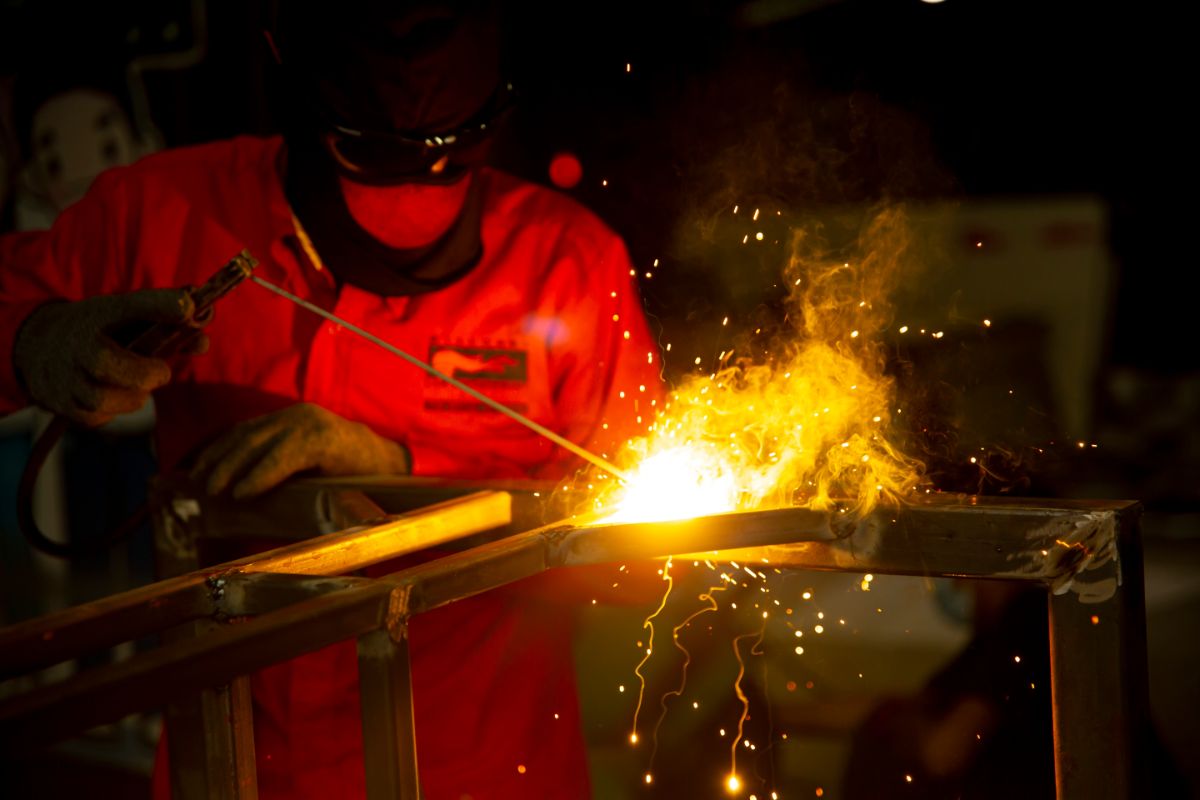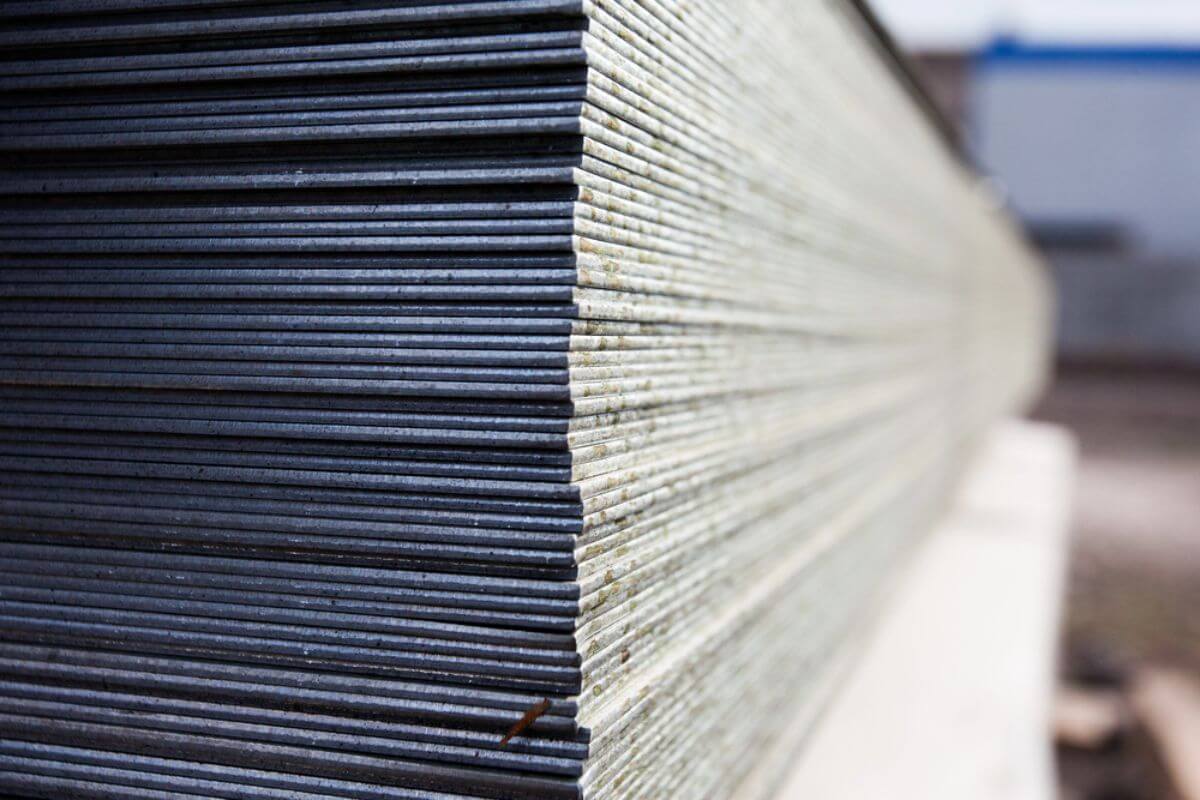What are the advantages of mild steel?
- Strength to weight ratio
- Ideal mechanical properties
- Favorable chemical properties
- Weldable
- Ductile
- Cost-effective
There are tons of kinds and grades of metal for you to choose from in any metal project — whether you’re sourcing new metal products for manufacturing or construction or finding the right material for your DIY project.
But when it comes to steel, very few grades can deliver as good as mild steel can. It’s versatile, widely available, and has many benefits over other steel forms, so it’s ideal for a vast range of applications.
Want to learn more about the advantages of mild steel and whether this metal is right for you? Keep reading to learn more!
What is mild steel?
Mild steel is a grade of carbon steel, which are metals that primarily contain carbon and iron. Carbon enhances the properties of pure iron, and the resulting mechanical and chemical properties vary depending on the carbon content.
For mild steel products, they carry the lowest amount of carbon in the range of 0.05 to 0.25%. This is why this grade of metal is also known as low-carbon steel.
While there are different grades of mild steel, they all have a carbon content within the specified range. This carbon content is added during the manufacturing process similar to other grades of carbon steel — i.e. through heat treatment methods.
Strength to weight ratio
Compared to other grades of carbon steel (and most other steel types), mild steel is one of the lighter metals you can use. This is because the carbon content in these metals is the main influencing factor for their overall weight.
And, despite its lighter weight, it still has an impressive strength-to-weight ratio. It’s a durable and hard metal. This makes it reliable steel for producing metal products and a much easier material to work with during the manufacturing process.
Ideal mechanical properties

Like weight, the carbon content in this material influences many other properties. In particular, it affects what mechanical properties carbon steel offers.
Mild steel may be less hard than its counterparts with its lower carbon content. But, this allows them to offer improved malleability, as they are less brittle and less likely to fracture under pressure.
Aside from that, mild steels still offer higher tensile strength and higher impact resistance than carbon steels. Additionally, they are magnetic due to their ferrite content.
Favorable chemical properties
Aside from iron and carbon, mild steel can be produced with many alloying elements. Whatever combination manufacturers decide to use in their mild steel will affect their chemical properties, making the final product more suited to certain applications.
Common alloying elements for mild steels include chromium, manganese, sulfur, phosphorus, copper, and cobalt. Each one can enhance certain chemical properties. The main purpose of alloying is to improve heat resistance, corrosion resistance, and wear resistance.
For example, mild steel made with more chromium content improves corrosion resistance and hardness. This is ideal for applications where metal can resist oxidation due to exposure to air and water. Copper is another alloying element that has a similar effect on mild steel and is commonly used for products like pipes and tubes.
Weldable
One of the biggest advantages that mild steel products offer is their weldability. Unlike other grades of carbon steel, mild steel can be welded quickly and easily. This is because of their steel composition — electric currents can travel with ease through mild steel without affecting the metal’s “make-up.”
This is an issue with other types of steel, such as stainless steel. Where these materials may need special techniques to go through the welding process, mild steel can be processed with much simpler, cheaper techniques. This makes it an easy material to work with during fabrication.
Ductile
Ductility measures a metal’s ability to be plastically deformed through elongation techniques. For ductility, the metal must be able to do this without fracturing. To be considered ductile, the metal should be plastically deformed around 15% before it is permanently deformed and unable to return to its original shape.
In this regard, mild steel is one of the more ductile metals you can use for your project. It can bend and stretch without permanently deforming, even when a relatively large force is applied to it. This quality makes them easy to work with when shaping, bending, and welding.
Cost-effective

Mild steel is one of the least expensive of all steel grades. This makes it a cost-effective option for manufacturing everyday objects, such as automobile frames, steel pipes, and even cookware.
The reason it’s priced much lower than other forms of steel is its relatively low carbon content. So, when working on a more limited budget, mild steel may just be the right choice for you. And, when this metal is needed in large amounts, it can be quickly and cheaply produced en masse compared with other steel products.
One of the few considerations you have to make concerning its price is additional treatment. For certain applications, mild steel will need to be galvanized or heat-treated to improve its corrosion resistance — but even then, it tends to be cheaper than other options.
Key Takeaway
There are many advantages of mild steel that could place this material at the top of your list. If you need a reliable supply of high-quality mild steel and mild steel products, contact Regan Industrial Sales, Inc. today. We provide the best steel products in the Philippines and even offer our customers hassle-free delivery, customization, and fabrication services.






